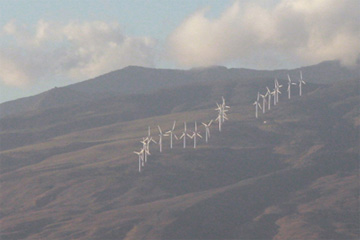
In March the biggest climate conference of the year took place in Copenhagen: 2500 participants from 80 countries, 1400 scientific presentations. Last week, the Synthesis Report of the Copenhagen Congress was handed over to the Danish Prime Minister Rasmussen in Brussels. Denmark will host the decisive round of negotiations on the new climate protection agreement this coming December.

The climate congress was organised by a "star alliance" of research universities: Copenhagen, Yale, Berkeley, Oxford, Cambridge, Tokyo, Beijing - to name a few. The Synthesis Report is the most important update of climate science since the 2007 IPCC report.
So what does it say? Our regular readers will hardly be surprised by the key findings from physical climate science, most of which we have already discussed here. Some aspects of climate change are progressing faster than was expected a few years ago - such as rising sea levels, the increase of heat stored in the ocean and the shrinking Arctic sea ice. "The updated estimates of the future global mean sea level rise are about double the IPCC projections from 2007″, says the new report. And it points out that any warming caused will be virtually irreversible for at least a thousand years - because of the long residence time of CO2 in the atmosphere.
Perhaps more interestingly, the congress also brought together economists and social scientists researching the consequences of climate change and analysing possible solutions. Here, the report emphasizes once again that a warming beyond 2ºC is a dangerous thing:
Temperature rises above 2ºC will be difficult for contemporary societies to cope with, and are likely to cause major societal and environmental disruptions through the rest of the century and beyond.
(Incidentally, by now 124 nations have officially declared their support for the goal of limiting warming to 2ºC or less, including the EU - but unfortunately not yet the US.)
Some media representatives got confused over whether this 2ºC-guardrail can still be met. The report's answer is a clear yes - if rapid and decisive action is taken:
The conclusion from both the IPCC and later analyses is simple - immediate and dramatic emission reductions of all greenhouse gases are needed if the 2ºC guardrail is to be respected.
Cause of the confusion was apparently that the report finds that it is inevitable by now that greenhouse gas concentrations in the atmosphere will overshoot the future stabilization level that would keep us below 2ºC warming. But this overshooting of greenhouse gas concentrations need not lead temperatures to overshoot the 2ºC mark, provided it is only temporary. It is like a pot of water on the stove - assume we set it to a small flame which will make the temperature in the pot gradually rise up to 70ºC and then no further. Currently, the water is at 40ºC. When I turn up the flame for a minute and then back down, this does not mean the water temperature will exceed 70ºC, due to the inertia in the system. So it is with climate - the inertia here is in the heat capacity of the oceans.
From a natural science perspective, nothing stops us from limiting warming to 2ºC. Even from an economic and technological point of view this is entirely feasible, as the report clearly shows. The ball is squarely in the field of politics, where in December in Copenhagen the crucial decisions must be taken. The synthesis report puts it like this: Inaction is inexcusable.
Related links
Press release of PIK about the release of the synthesis report
Copenhagen Climate Congress - with webcasts of the plenary lectures (link on bottom right - my talk is in the opening session part 2, just after IPCC chairman Pachauri)
Nobel Laureate Meeting in London - a high caliber gathering in May that agreed on a remarkable memorandum which calls for immediate policy intervention: "We know what needs to be done. We can not wait until it is too late." The new U.S. Energy Secretary Steven Chu participated over the full three days in the scientific discussions - how many politicians would have done that?



